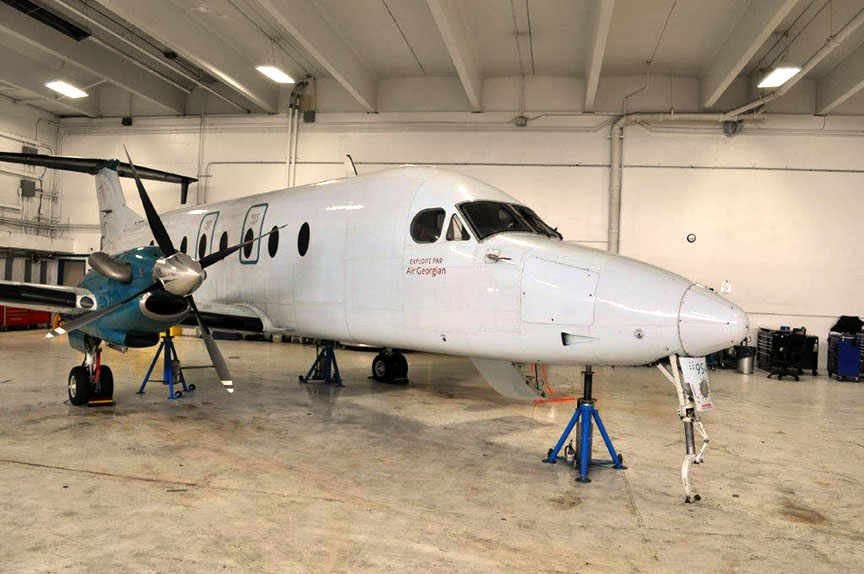Loss of nose wheel on touchdown
Air Georgian Ltd.
Beechcraft 1900D, C-GZGA
Calgary International Airport, Alberta
The occurrence
On , a Beechcraft 1900D aircraft operated by Air Georgian Ltd. was conducting Air Canada Express flight 7228 from Cranbrook, British Columbia to Calgary, Alberta with two crew members and nine passengers. Upon landing in Calgary, the aircraft lost its nose wheel just after touchdown. The aircraft then slid on the axle and lower nose gear casting for some 1200 feet down the runway before stopping. The tower controller noticed the shower of sparks and dispatched the airport rescue and firefighting services. Once the aircraft came to rest on the runway, the flight crew evacuated the passengers. No injuries were reported. The aircraft was subsequently towed to the hangar. The TSB is investigating.
Media materials
News release
Investigation report: April 2018 loss of nose wheel on touchdown at Calgary International Airport, Alberta
Read the news release
Deployment notice
TSB deploys a team of investigators to a landing incident at the Calgary International Airport, Alberta
Edmonton, Alberta, 10 April 2018 - The Transportation Safety Board is deploying a team of investigators to a landing incident that occurred last night involving an Air Georgian Ltd. aircraft operating as an Air Canada Express flight at the Calgary International Airport, Alberta. The TSB will gather information and assess the occurrence.
Investigation information
Download high-resolution photos from the TSB Flickr page.
Class of investigation
This is a class 4 investigation. These investigations are limited in scope, and while the final reports may contain limited analysis, they do not contain findings or recommendations. Class 4 investigations are generally completed within 220 days. For more information, see the Policy on Occurrence Classification.
TSB investigation process
There are 3 phases to a TSB investigation
- Field phase: a team of investigators examines the occurrence site and wreckage, interviews witnesses and collects pertinent information.
- Examination and analysis phase: the TSB reviews pertinent records, tests components of the wreckage in the lab, determines the sequence of events and identifies safety deficiencies. When safety deficiencies are suspected or confirmed, the TSB advises the appropriate authority without waiting until publication of the final report.
- Report phase: a confidential draft report is approved by the Board and sent to persons and corporations who are directly concerned by the report. They then have the opportunity to dispute or correct information they believe to be incorrect. The Board considers all representations before approving the final report, which is subsequently released to the public.
For more information, see our Investigation process page.
The TSB is an independent agency that investigates air, marine, pipeline, and rail transportation occurrences. Its sole aim is the advancement of transportation safety. It is not the function of the Board to assign fault or determine civil or criminal liability.
